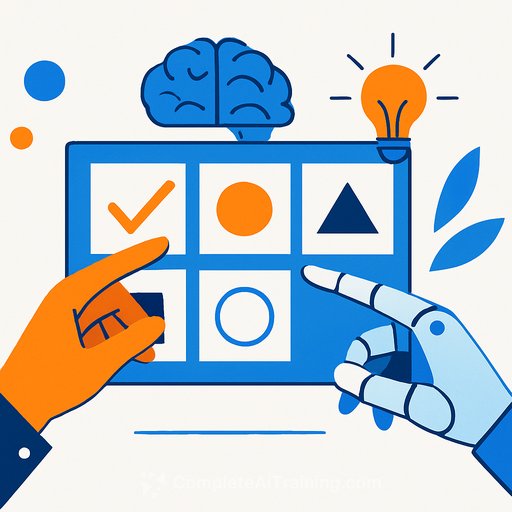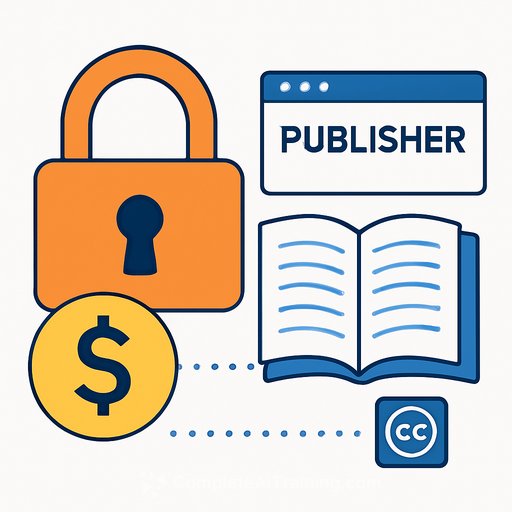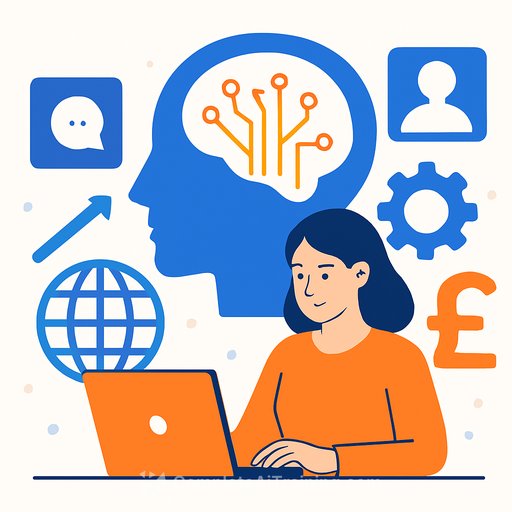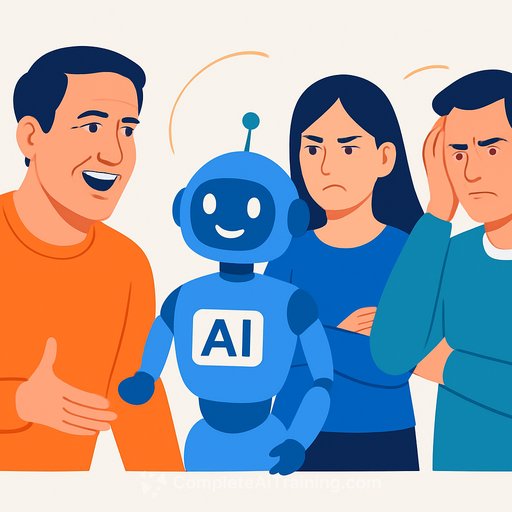What Does It Mean to Be Creative in the Age of AI?
AI can produce an image, layout, or draft in seconds. That doesn't replace the creator - it changes what the creator does. A July 2025 Brookings study reports freelancers in highly exposed fields like graphic design are already seeing fewer contracts and lower earnings. The question isn't if AI affects creative work; it's how you adapt your process and positioning.
The Human Edge: Focus Over Flare
"Generative AI needs people," said Lydia Chilton, Associate Professor of Computer Science at Columbia Engineering. Her model is simple: AI is great at flare (lots of options fast). Humans deliver focus (judgment, meaning, and intent). She also notes that AI is "reductive and fundamentally unoriginal" - it predicts the most common output and can't judge truth or audience impact.
- Use AI to explore wide: prompts, variations, sketches, word lists.
- Use yourself to decide narrow: taste, context, constraints, story.
- Set criteria upfront: audience, message, constraints, success signals.
- Run short sprints: generate, curate, refine, test, repeat.
Design as Judgment: Options vs. Decisions
David Benjamin, Associate Professor of Architecture and Founding Principal of The Living, uses generative design to open option space - from airplane partitions to factory layouts balancing financial, operational, environmental, and social goals. The machine proposes. Humans decide. Final outcomes still rely on stakeholder values, tradeoffs, and collaboration.
Tools Have Tradeoffs: Know the Hidden Layers
Laura Kurgan, Professor of Architecture, Planning and Preservation, frames AI within the history of design tech. CAD once met resistance, then became standard - and it changed how students learned scale. AI will do the same: it speeds up work, but the data and parameters inside the model shape what you see. Her advice to students: know why you're using a tool, and how its settings affect the result.
- Ask which datasets and filters influence outputs.
- Keep an audit trail of prompts, settings, and edits.
- Prototype with constraints (brand, ethics, legal, context).
- Stress-test for bias, false claims, and aesthetic sameness.
Context and Consequences: Beyond Hype
Naeem Mohaiemen, Associate Professor of Visual Arts and Concentration Head of Photography, situates AI in a longer arc of ideas - from Walter Benjamin to Philip K. Dick and Arthur C. Clarke - while also looking at labor, copyright, regulation, and ethics. He examines how provenance tools can help, and where they fall short.
One example is Adobe's Content Authenticity Initiative, which lets artists embed attribution and usage info in their files. Helpful, yes - but it can shift the burden of protection from industry to individuals. Learn it, use it, and pressure platforms to support it.
AI as Material, Not Maker
Mohaiemen notes that practicing artists and students are skeptical and curious in equal measure. They treat AI outputs as raw material - not finished work. Student artist Francisco Javier Ramirez collaged real and fictional archives to contrast AI clichés with the lived reality of his Mexican Mormon migrant family. Photographer AKIRA KAWAHATA stitched detailed still-life images with AI versions to question what "photography" means now.
The pattern: redirect AI toward personal meaning. Keep human judgment at the center.
A Practical Playbook for Creatives
- Define intent: who is this for, what has to change, and how will you know it worked.
- Split your workflow: AI for idea volume, you for taste and narrative.
- Curate hard: cut 90%, combine the 10% that carries meaning.
- Parameter literacy: learn your tool's datasets, weights, style controls, and safety filters.
- Provenance by default: embed credits, edits, and usage rights in your files.
- Legal basics: stay current on copyright, licensing, and client agreements.
- Ethics check: avoid mimicry of living artists without consent; disclose AI use when appropriate.
- Value your process: price for concept, curation, and direction - not raw volume.
- Build a personal style system: references, rules, and stories that no model can guess.
Metrics That Matter
- Time saved on rote tasks (prep, variations, cleanup).
- Number of explored directions before commit.
- Client outcomes: clarity, differentiation, and fit to brief.
- Originality signals: how often your work gets recognized without a watermark.
Teach Yourself What AI Can't Do
AI scales patterns. You supply perspective. Study context, history, and consequences. Double down on taste, storytelling, ethics, and systems thinking - the parts that turn options into meaning.
If you want structured learning built around your role, explore curated picks by job and skill.
AI can draft a thousand versions. Creatives make the decision that matters.
Your membership also unlocks:






